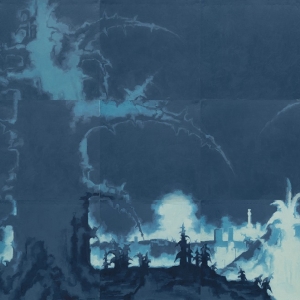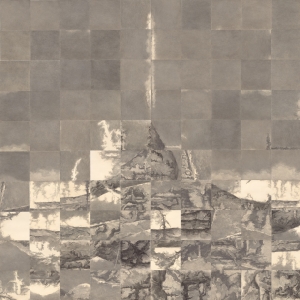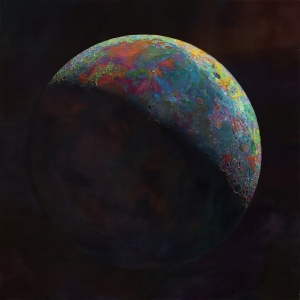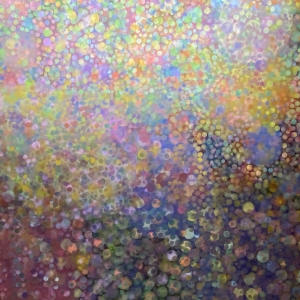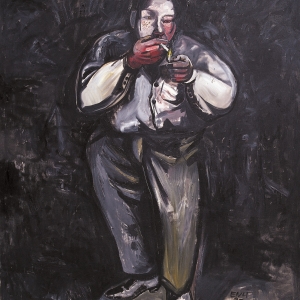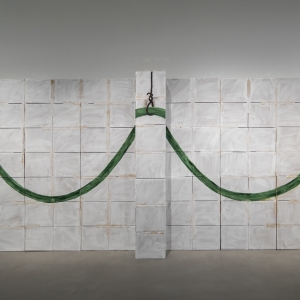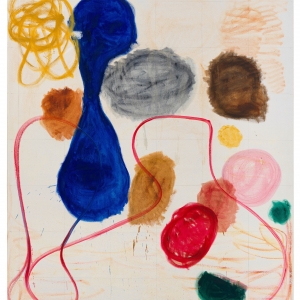国内
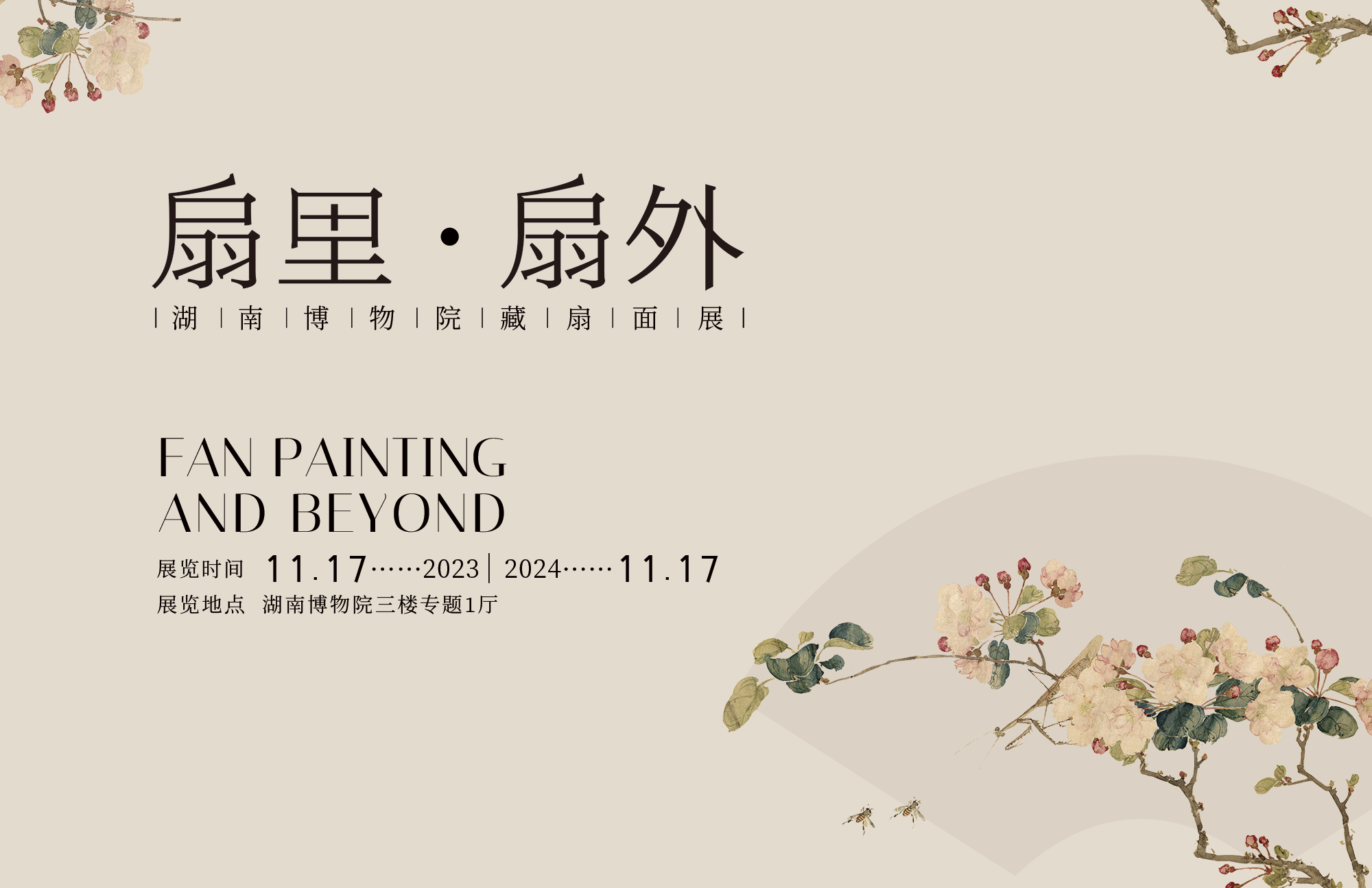
Introduction
“Fan Painting and Beyond — Exhibition of Fans”
Since the Song Dynasty, when aesthetically inspired individuals began to paint on silk fans, the fan painting has gradually evolved into a new form of Chinese calligraphy and painting. During the Ming Dynasty, folding fans became popular for their portability. Fans, appreciated for their beauty and their playfulness, became sought-after personal possessions among Shidafu, the scholar-officials of imperial China. From the Qing Dynasty to the Republic of China period, officials and scholars, in social gatherings, often competed in creating, gifting, and collecting fans, using fans to show their talents, tastes, and social status.
This exhibition will use the presentation of the artistic conception within fans and the camaraderie beyond fans as a starting point to reveal the cultural connotation of fan faces. Those displayed fans vividly present a variety of themes, including bird-and-flower, landscape, figure and poem. These themes can all be depicted on fans, utilizing the limited space to unfold unique layouts that showcase a distinct form of artistic beauty. Beyond the artistic conception, fans themselves embrace practical as well as cultural values. Scholars and literati express their sentiments through fans and exchange fans as gifts. The landscapes and poems depicted on the fans both convey the emotions and thoughts of their creators, allowing recipients to feel a sense of friendship while appreciating and handling the fan.
The collection of fans at the Hunan Museum mainly covers the Qing Dynasty to the Republic of China period, featuring a significant collection of works by renowned literati painters from Hunan Province. In addition to presenting traditional themes in fans, this exhibition will also delve into the cultural deposits of fans from the perspective of Hunan local culture. "In the tender embrace of breeze, half a sheet of paper gracefully folds and unfurls guiding us to a wonderful journey at a whim." Let us explore the feelings and scene of fan face art together to rediscover the elegance inherent in these fans.
Highlights
- 居廉 海棠蜜蜂图扇页 清同治八年(1869) 纸本设色 18×52cm 款识:荩臣一兄大人雅正,己巳四月,居廉。 印鉴:古泉(白文) 此画设色淡雅,笔法轻松流畅,运用“撞水撞粉”技法表现花卉,将植物处于岭南地区湿润气候环境下的特点表现得淋漓尽致,工写结合的画法使画面张弛有度,清新雅致。

- 陈师曾 浅红低巫图扇页 民国 纸本设色 25×53cm 款识:浅红低亚麦初肥,近水穿林款款飞。堕溷太迟添小劫,帽檐香压折枝归。洞天无地海扬尘,欲访仙源万里津。不许桃花自开落,当年愁杀避秦人。昨夜东风剠鬓过,苦将泪眼看恒河。鸣禽只管嘀春散,留得空枝结恨多。觭庵。 印鉴:觭庵(朱文) 此图是花鸟画折枝构图的典型作品,画桃花不见全株,仅折取几枝入画,设色清丽,用笔娴熟浑厚,构图舒朗,彰显开合对比之趣,左下部分的折枝桃花与右上角题款呈对角线分割扇面,使画面达成微妙的视觉均衡,画家精湛的构图能力可见一斑。
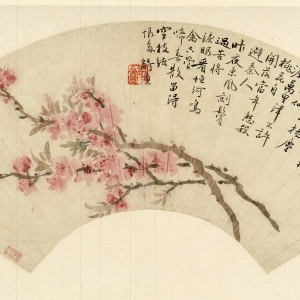
- 雷悦 玉壶买春图扇页 民国十三年(1924) 纸本设色 17.5×53cm 款识:玉壶买春。紫棠先生法家教之,甲子午月,雷悦。 印鉴:雷(朱文),悦(白文)
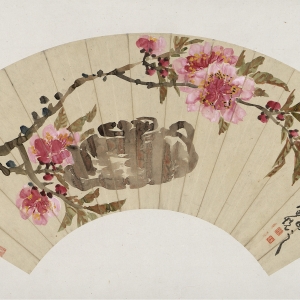
- 师妙萤 牡丹图扇页 清 纸本设色 16×51cm 款识:霱裳师妙萤。
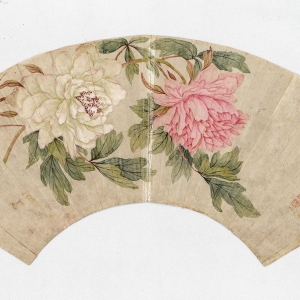
- 包世臣 松竹牡丹图扇页 清 纸本设色 19×53cm 款识:书城大兄属画,倦翁包世臣。 印鉴:小倦游阁(朱文),水晶如意玉连环室(朱文) 此扇面画松、竹、牡丹,构图层次丰富,错落有致。松树勾勒点染,干湿笔并用,花卉以没骨法直接画成,竹为双勾画法,山石皴擦点染,逸笔草草。设色温润淡雅,笔法劲健,自然天趣尽显于纸上。
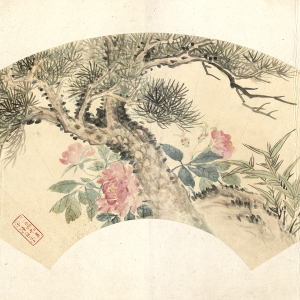
- 孙铁州 花鸟扇页 清 纸本设色 18.5×53cm 款识:法道复先生意,铁州。 印鉴:孙(朱文) 此图的石榴花、叶用笔干脆轻快,不见复笔,石榴花点染时笔头蘸色略浓稠,以形成质感的区别,而更有重量感的石榴却以水分极多的湿笔草草画成,再以淡色描绘枝头的禽鸟,从而构成了画面中笔触与质感的对比趣味。作品笔法灵动,墨色淋漓,一气呵成,显示出画家高超的绘画手法。
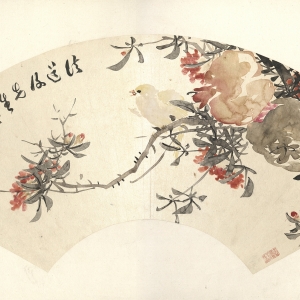
- 刘侗寿 拂暑图扇页 清 纸本设色 23.6×24.5cm 款识:和鸾贤壻拂暑,侗寿。 印鉴:侗寿印(白文) 此图写生感强,画一只蝉扶柳枝而上,而柳叶因枝干负重而随之震荡。画家用灵动的用笔表现出柳叶飘荡的动势,场景生趣盎然,盛夏的气息扑面而来。 刘侗寿(生卒年不详),字仲青,湖南衡阳人。工山水、花卉,遒劲有致。
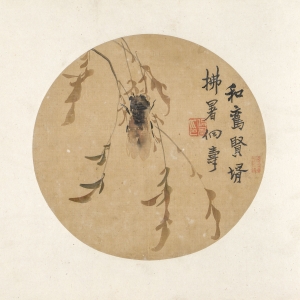
- 齐白石 苇雁图扇页 民国 纸本设色 17.8×44cm 款识:仙谱九弟世大人正,小兄璜。 印鉴:璜(白文) 此图笔墨老辣朴拙,用笔以铺毫为主,中锋侧锋灵活运用,仅雁头、雁足略施淡色加以勾勒,极见神韵,可见作者对所画对象生长特征已了然于胸。雁身墨色层次丰富,表现出蓬松的羽毛质感,作品自然有生趣。
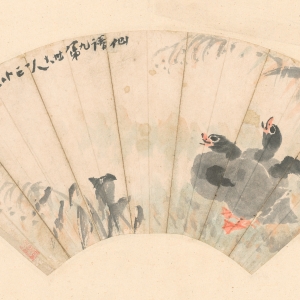
- 汤熊 苇雁图扇页 清 绢本设色 24.6×25.5cm 款识:尧衢都转大人钧政,钱塘汤熊。 印鉴:西侯(白文) 画中大雁结伴于岸边饮水嬉戏,场景饶有野趣。全图笔墨工致,水面以勾勒笔法绘出波纹,坡岸以淡墨进行大笔触晕染,苇雁用没骨法表现,大雁造型准确,省略了羽毛的细节表现,化繁为简,着重于大雁神态与动势的描绘,显示出画家独特的观察视角,富有装饰性趣味。
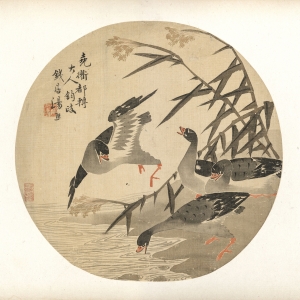
- 符铸 菊石图扇页 民国 绢本设色 23.9×24.5cm 款识:幽华瘦石,古色斑斓,昔见孟丽堂本,令人叹绝。铁年。 印鉴:铁道人(白文)
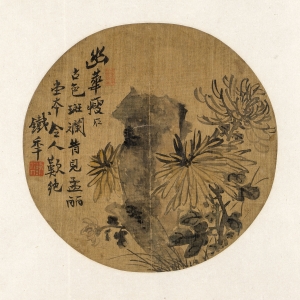
- 张熊 花卉图扇页 清穆宗同治三年 纸本设色 17.7×51.8cm 款识:嘉予一兄大人雅属,甲子秋八月,子祥张熊 。 印鉴:熊(朱文) 此图色、墨明净,富有层次,轮廓勾染严谨,叶子以多笔画成,在第一笔墨迹未干时继续出笔,以达到湿度的统一,细看依然可见笔触停顿导致的墨迹变化,作品归于写意与没骨一类,呈现出一种精致的画面气质。

-
See More


Introduction
扇里·扇外——湖南博物院藏扇面展
自从极具美学灵性的宋人开始在纨扇上挥洒丹青,扇画便逐渐成为中国书画艺术的新形式。有明一代,便于携带的“聚头”折扇风靡流行,可供赏阅亦可把玩的扇子,成为士大夫所推崇的随身雅物。清至民国,在往来应酬的文化交流中,官员世士们更是争相以画扇、赠扇、藏扇为趣,以此彰显个人的才气品位与身份地位。
本次展览将以呈现扇画意境与扇外情谊作为切入点,揭示扇面的文化内涵。扇画题材广泛,花鸟、山水、人物、诗词皆可入扇,方寸间随形布局,展现出一种独特的艺术形式美。而在扇画意境之外,扇子本身又多了一种文化实用价值,文人墨客借扇抒情,以扇相赠,笔端描绘的景致、书写的诗句都传递着作者的情绪与心意,受赠者在欣赏、把玩扇子的同时便能感受到这份情谊。
湖南博物院扇面藏品以清至民国时期为主,其中湖湘名士作品极为丰富,本次展览除了从传统题材来展示扇面艺术外,还将从湖湘地域文化视角来深挖扇面的文化底蕴。“开合清风纸半张,随即舒卷岂寻常”,让我们共同走进扇画艺术的情与景,重拾扇面雅趣。
Highlights
- 居廉 海棠蜜蜂图扇页

- 陈师曾 浅红低巫图扇页

- 雷悦 玉壶买春图扇页

- 师妙萤 牡丹图扇页

- 包世臣 松竹牡丹图扇页 清 纸本设色 19×53cm 款识:书城大兄属画,倦翁包世臣。 印鉴:小倦游阁(朱文),水晶如意玉连环室(朱文) 此扇面画松、竹、牡丹,构图层次丰富,错落有致。松树勾勒点染,干湿笔并用,花卉以没骨法直接画成,竹为双勾画法,山石皴擦点染,逸笔草草。设色温润淡雅,笔法劲健,自然天趣尽显于纸上。

- 孙铁州 花鸟扇页

- 刘侗寿 拂暑图扇页

- 齐白石 苇雁图扇页

- 汤熊 苇雁图扇页

- 符铸 菊石图扇页

- 张熊 花卉图扇页

- 民国二十年(1931) 纸本设色 20.3×54.3cm 款识:名花谕岭至,婀娜自成阴。不分芳春色,犹余晚岁心。绛分疏翠小,青入嫩红深。本识仙源种,无妨共入林。辛未夏六月,陈年。 印鉴:陈年之印(白文),半丁(朱文),未老心先懒(白文) 此画构图洗练巧妙,所画夹竹桃从扇面右侧斜势生出,有意避让出题款位置,达到画面构图的均衡,可谓别具匠心,可以看出画家精湛的笔墨表现力,整幅画大多为一笔画成,并无复笔,设色淡逸清丽,笔墨放恣,体现出文人画逸笔草草的韵味,是值得反复寻味的佳作。See More


Introduction
Mo Litang Art Exhibition
"There was once a man named Litang in Hunan province, who was not only talented but also modest”. As the founder of Hunan Artists Association, Mo Litang not only participated in the preparation of the association, but also served as the executive director of it for a long time, and then worked in Hunan Provincial Mass Art Museum (now Hunan Provincial Culture Centre), carrying out professional counselling for art cadres in the Hunan province. In the art of calligraphy and painting, he studied under the famous painter and art educator Gao Xishun. In Mo’s early years, he liked to depict the new appearance of his hometown with colourful ink. In the 1980s, Mo became a renowned painter of landscape painting in Hunan. In his later years, he specialised in calligraphy, and he created the “Axe Chopping Style”, which has a majestic atmosphere, and is a perfect complement to his painting. Strict and modest, Mo took “Sharpening your axe will not delay your job of chopping wood”as his motto, and after retirement, he still kept going back to the tradition, refining his heart and brushwork, and living in semi-seclusion in his own study, “Paddy Garden”, painting and practising calligraphy for his own amusement, thus forging the literati character in the eyes of others.
As a representative of elder generation of Hunan artists, Mo had a deep affection for his hometown and has created many paintings concerning Hunan. He was one of the earliest artists who depicted the landscapes of Zhangjiajie and was famous for his description of strange and perilous mountains and rivers of Zhangjiajie. Its landscapes are the testing ground for his freehand brushwork paintings. Since the 1980s, he had been exploring the unique style of freehand landscapes with heavy ink and sharp brushwork by copying the stone springs and gullies of Zhangjiajie. A major feature of Mo’s painting is that it is grounded in solid sketching, and not only his landscapes, but also his highly refined flower and bird paintings, his vivid cavities and eagles, shelled chicks, etc. are the embodiment of his exclusive brushwork and in-depth observation. In the field of painting and calligraphy, Mr. Mo has spent his life’s work to pursue the saying of “bizarre ink makes brilliant painting”, and we believe that he has not only achieved it, but also finally formed his one-of-a-kind artistic style.
Mo’s family donated more than 100 pieces of Mo’s paintings and calligraphy as well as his manuscripts to the Hunan Museum in 2022. These works have been incorporated into the collection system of Hunan Museum, which not only enriches the “Hunan Painting and Calligraphy Celebrity Collection”, but also extends the material of Hunan regional art history. It takes the donated works as the main body, shows his art talent from landscape painting, flower and bird painting, and calligraphy, and outlines the general lineage of his artistic development, which is the presentation of the result of the preliminary research of Mr. Mo’s art works. This exhibition pays tribute to Mr. Mo’s contribution, and we hereby express our thanks to his family for their generous donation!
Highlights
- 湖乡新景
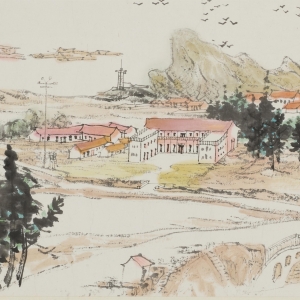
- 岳阳楼
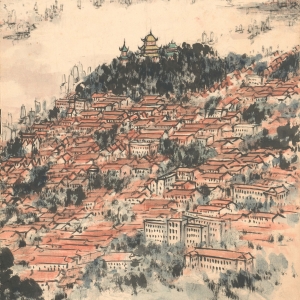
- 山城丽
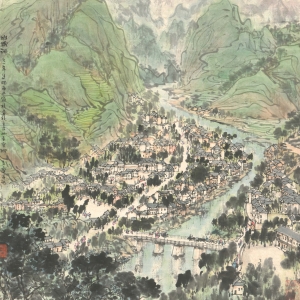
- 苗山新景
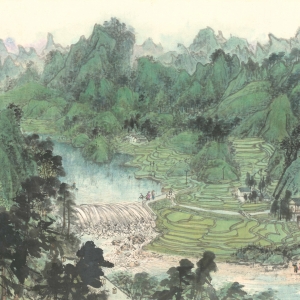
- 湖乡小景
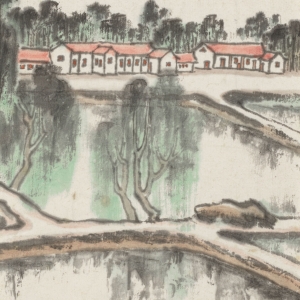
- 湘南农村
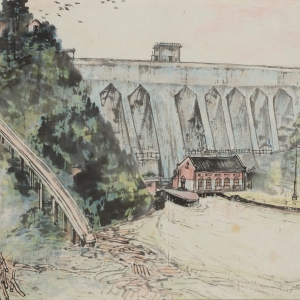
- 绿江桥头
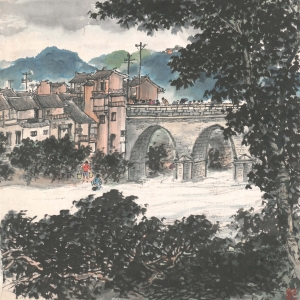
- 村居
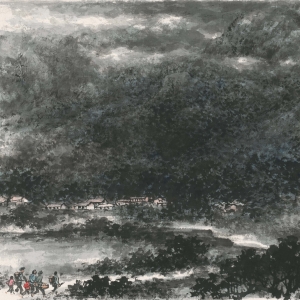
- 翠谷新城
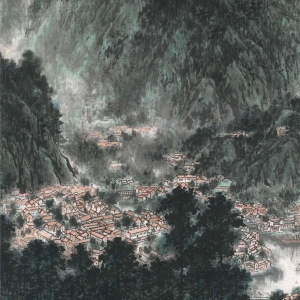
- 索溪峪百丈峡

- 张家界
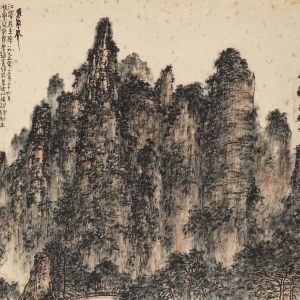
- 2006年 纸本 纵37.5厘米,横45厘米 湖南博物院藏 【释文】 款识:张家界名胜有袁家界奇观,波澜壮阔,气魄非凡,望之使人心惊肉跳,真世上绝景、天下奇观也。此作为老眼写生之一角,时年八十有二,身体尚健,故能登山一游,万幸万幸。余上张家界已是第七次矣。丙戌冬磨刀老人立唐并记。 印鉴:莫(朱文),立唐(朱文),磨刀老人(朱文)See More

Artist introduction
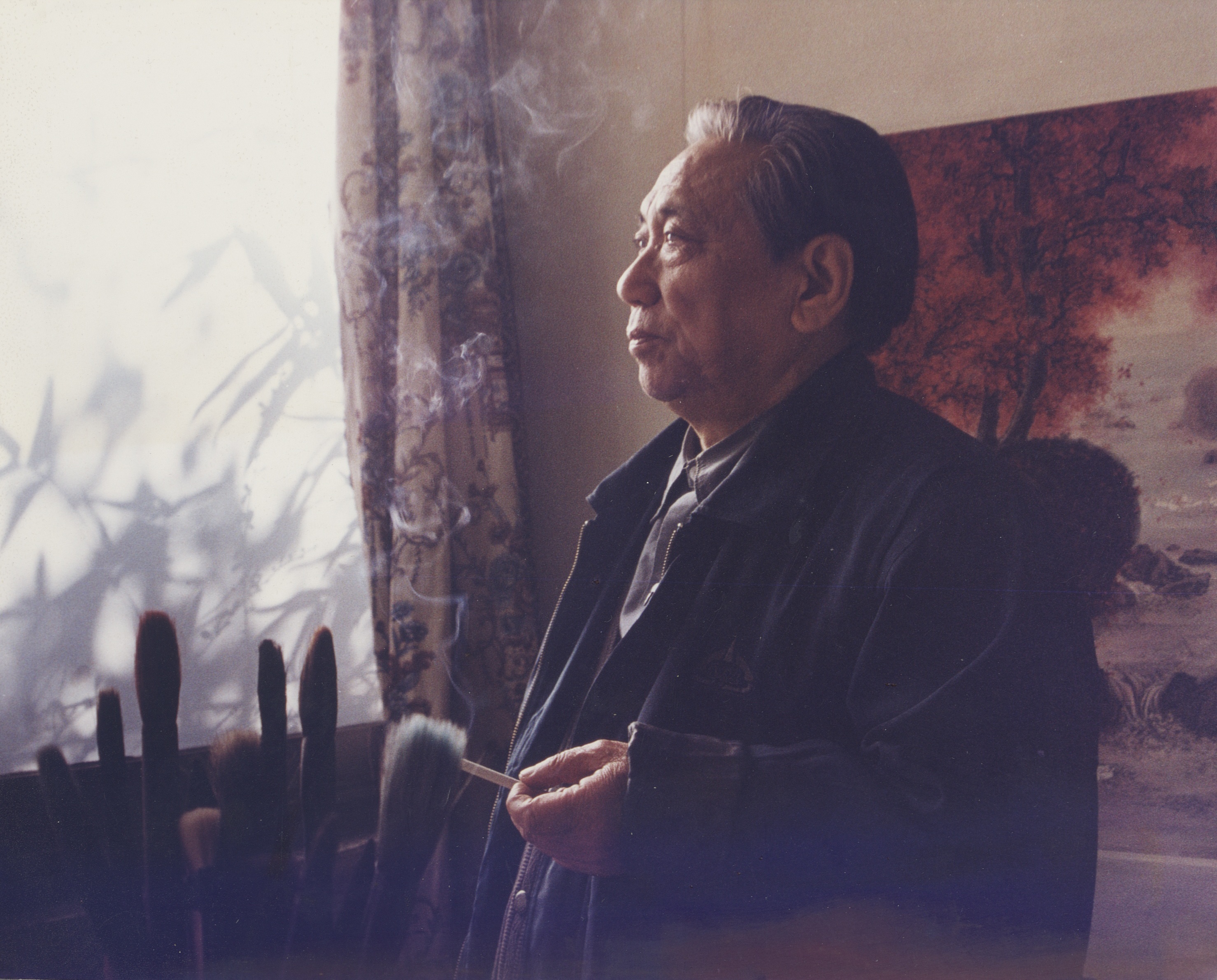
Mo Litang
(1925-2016)
A native of Taogang County, Hunan Province,
His courtesy name is ShuGuang(first light of morning).
He styled himself as Zi Yunweng and Old Man Grinding Knives.
He was the executive director of Hunan Provincial Artists Association,
member of China Artists Association,
and a special artist of Hunan Painting and Calligraphy Research Institute.

Introduction
恶墨点华章——莫立唐艺术展
“三湘一立唐,艺多不张扬”。作为湖南省美协的创会元老,莫立唐先生不仅参与了协会的筹备,并长期担任驻会常务理事,其后任职湖南省群众艺术馆(现湖南省文化馆),为全省的美术干部开展美术专业辅导。在书画艺术上,他师承著名画家、美术教育家高希舜先生,早年喜用彩墨描绘家乡新貌,20世纪80年代便成为享誉湖湘的山水画代表画家;晚年专攻书法,独创“斧劈书”,大气雄浑,与其绘画相得益彰。严谨谦逊的他以“磨刀不误砍柴工”为座右铭,退休以后仍不断地回溯传统、锤炼自己的心性与笔墨,半隐居在自己的书斋“稻田园”里书画自娱,铸就了他人眼中的文人风骨。
莫立唐作为湖南老一辈艺术家代表,对故乡怀有深情,创作了很多湖南题材的绘画,他是最早描绘张家界山水的艺术家之一,并以画张家界奇崛山水著称。张家界山水是其走向大写意的试验田,20世纪80年代开始他便通过描摹张家界的石泉、丘壑,探索出独有的墨色厚重、用笔爽利的大写意山水风格。以扎实的写生为基础,是莫氏绘画的一大特点,不惟其山水如此,其形式高度洗练的花鸟画也是如此,他笔下活灵活现的洞庭鱼鹰、破壳雏鸡等等都是他个人浓墨用笔与深入观察的体现。在书画领域,莫老用毕生心血以求“恶墨点华章”,我们认为他不仅做到了,也最终形成了他独特的艺术语言。
2022年,莫立唐先生家属将百余件莫立唐书画作品及手稿捐赠给湖南博物院。这些作品已纳入湖南博物院的收藏体系,既充实了本院“湖南书画名人收藏”,也丰富了湖南地域美术史的材料。本展览以捐赠作品为主体,从山水画、花鸟画、书法三个方面展示他的“多艺”,同时也勾勒出其艺术发展的大致脉络,是对莫立唐艺术作品初步研究的成果体现。以此展览致敬莫立唐先生在湖南艺术界的贡献,并感谢其家属的慷慨捐赠!
Highlights
- 湖乡新景

- 岳阳楼

- 山城丽

- 苗山新景

- 湖乡小景

- 湘南农村

- 绿江桥头

- 村居

- 翠谷新城

- 索溪峪百丈峡

- 张家界

- 2006年 纸本 纵37.5厘米,横45厘米 湖南博物院藏 【释文】 款识:张家界名胜有袁家界奇观,波澜壮阔,气魄非凡,望之使人心惊肉跳,真世上绝景、天下奇观也。此作为老眼写生之一角,时年八十有二,身体尚健,故能登山一游,万幸万幸。余上张家界已是第七次矣。丙戌冬磨刀老人立唐并记。 印鉴:莫(朱文),立唐(朱文),磨刀老人(朱文)See More

Artist introduction

莫立唐
(1925—2016)
湖南省桃江县人,字曙光,号紫云翁、磨刀老人
曾任湖南省美术家协会驻会常务理事、
中国美术家协会会员、
湖南书画研究院特聘画师

Introduction
Cultural Relics of Four Dynasties: Zhou, Qin, Han and Tang
Shaanxi, one of the significant birthplaces of the Chinese nation and one of the centers of the ancient world civilization, served as the capital for fourteen dynaties, including Zhou, Qing, Han and Tang. Shaanxi’s profound cultural heritage and historical accumulation have endowed it with an extraordinary rich cultural legacy, fostering highly developed material and spiritual civilizations, and composing the most glamorous chapter of Chinese civilization.
This exhibition gathers 120 sets of ancient cultural relics from various institutions such as Shaanxi History Museum, Xianyang Museum, Han Yangling Museum, Famen Temple Museum, Qianling Museum, and Chang'an Museum. Guided by the timeline and centered on the cultures of Zhou, Qin, Han, and Tang, the exhibition unfolds brilliant chapters of Shaanxi's history, showcasing the essence of thought and cultural elegance carried by these four dynasties during the process of civilization development. The exhibition highlights the national spirit and cultural confidence of the Chinese nation, characterized by virtues, diligence, inclusiveness, and innovation, vividly presenting the glorious epochs in Chinese history.
History may be distant, but it is not illusory, and relics may be silent, but they can tell stories. Hunan Museum sincerely invites the audience to traverse through thousands of years of time, experience the splendid memories of ancient China, and immerse themselves in the rituals of Zhou, the governance of Qin, the culture of Han, and the charm of Tang, share the dreams and glory of the past.
Highlights
- 青铜雷纹鼎
- 青铜人面具
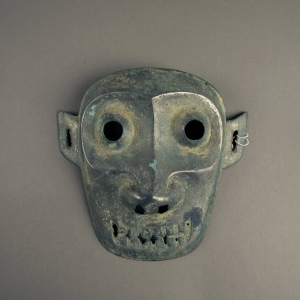
- “伯作”青铜壶
- 镂空青铜豆

- “更作”青铜鼎
- “友父”青铜簋
- 云纹青铜编钟
- 蟠虺纹青铜构件(金釭)
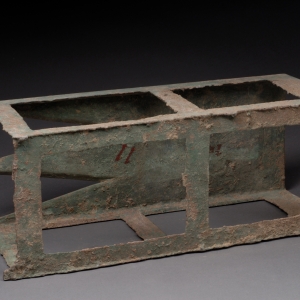
- 凤鸟纹瓦当
- 青铜甗
- 青铜钮钟
- 秦 高16厘米 1974年陕西西安临潼区秦兵马俑一号坑出土 陕西历史博物馆藏See More
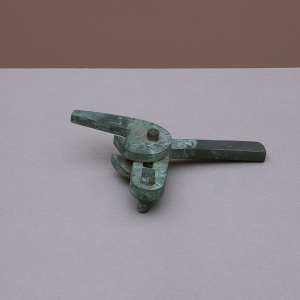

Introduction
The Flavor of Hunan
China is the country of origin of tea, the tea exports have been recorded as early as the 6th century. On the 17th century, tea has surpassed silk and porcelain to become the largest export in the Qing Dynasty. As the bridge between Euraisa, Russia is not only the major tea consumer, but also considers reselling Chinese tea to the European market to be an important source of income. "The Tea Road" between China and Russia, which flourished from the 17th century to the early 20th century, has become another international trade route connecting Europe and Asia after the silk road.
When President Xi Jinping visited Russia in 2013, he pointed out in his speech at the Moscow Institute of International Relations that "The Tea Road" is the "artery of the century" linking China and Russia. The "The Tea Road" starts from Wuyi Mountain in Fujian Province in the south, passes through Jiangxi, Anhui, Hunan, Hubei, Henan, Shanxi, Hebei and Inner Mongolia, to Moscow, St. Petersburg and other major cities in Europe. This tea road, which stretches for 10,000 miles through the East and West, is not only an economic corridor starting with the tea trade, but also an important cultural route, which has profoundly influenced the commerce, culture and lifestyle of various places along the way.
In March 2019, "the Tea Road" was officially listed on the "Preparatory List of China's World Cultural Heritage" by the National Cultural Heritage Administration. As an important part of the "One Belt and Road" initiative, the historical and humanistic information carried by "the Tea Road" has highlighted its important cultural value. Through carrying out "the Tea Road" cultural heritage investigation, research, protection, and actively promoting the transnational joint application for the world cultural heritage, giving full play to the functions and roles of cultural relics departments, and making good use of cultural heritage resources, it will further realize the cultural exchanges, economic interconnection of countries along the route of China, Mongolia, Russia and Central Europe in the new period, and bring new vigor and vitality.
Highlights
- 长沙窑青釉褐彩“荼埦”
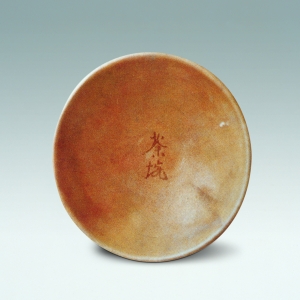
- 青花开光诗句海棠式茶托

- 金地麻姑祝寿粉彩盖碗
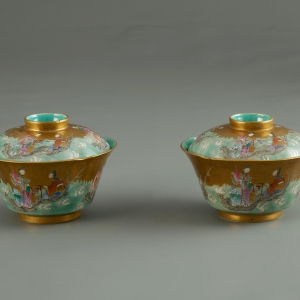
- 单桶揉茶机
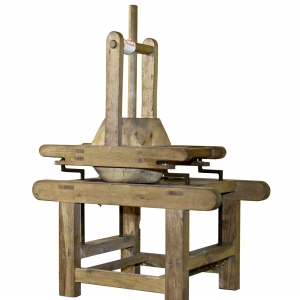
- “泰和合号茶庄”青花盖罐
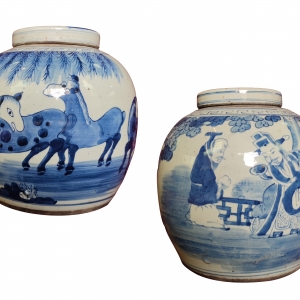
- “协和昌”茶号纪念杯(2件)
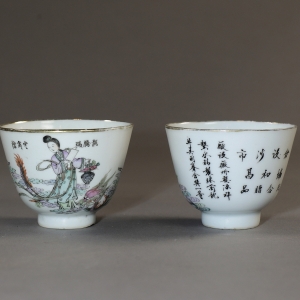
- 安化黑茶运输路线图
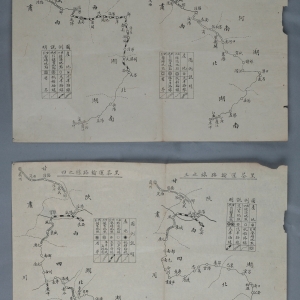
- 俄罗斯“汉口茶”茶罐一对
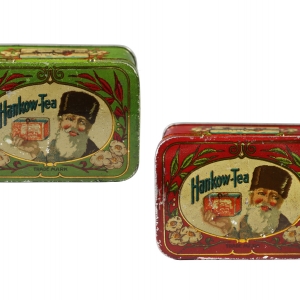
- 山西介休至湖北京山行商路线手札
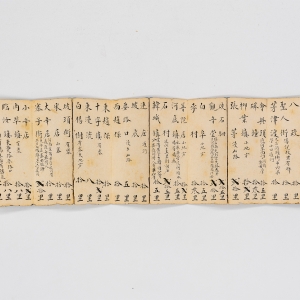
- 孙义顺安茶号商标
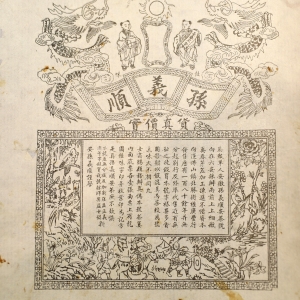
- “凤凰来仪”茶盒
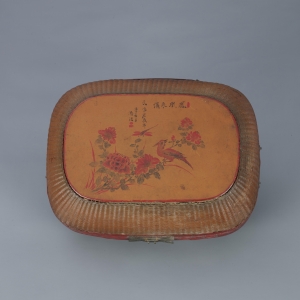
- 1947年 直径28.7厘米,高6.8厘米 湖南博物院藏 茶盒上绘花鸟纹饰,配刘揆一自题诗:“穷到无边尤自豪,清闲远比做官高。归来尚有花鸟在,幸喜生平未折腰。民国丁亥岁 刘揆一 自置。”刘揆一(1878-1950),字霖生,祖籍湖南衡山。See More
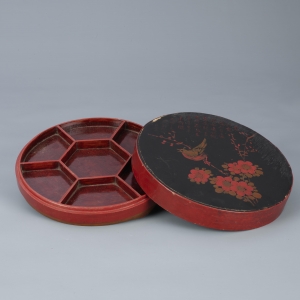

Introduction
世纪动脉 万里茶道——九省(区)茶文物联展
中国是茶叶的原产国,早在公元6世纪就有茶叶出口的记载。17世纪,茶叶已超越丝绸和瓷器,成为清王朝最大宗的出口商品。俄国作为欧亚大陆的桥梁,不仅是茶叶消费大国,更将中国茶叶转销欧洲市场视为重要的经济来源。兴盛于17世纪至20世纪初的中俄万里茶道,成为继丝绸之路后,沟通欧亚大陆的又一条国际商路。
2013年习近平总书记访问俄罗斯时,在莫斯科国际关系学院的演讲中特别指出,“万里茶道”是连通中俄两国的“世纪动脉”。万里茶道南起福建武夷山,经江西、安徽、湖南、湖北、河南、山西、河北、内蒙古,销往莫斯科、圣彼得堡及欧洲各大城市。这条贯穿中西、绵延万里的茶叶之路既是以茶叶贸易为开端的经济通道,也是一条重要的文化线路,深刻影响了沿途各地的商业、文化及生活方式。
2019年3月,“万里茶道”被国家文物局正式列入《中国世界文化遗产预备名单》。作为“一带一路”倡议的重要组成部分,“万里茶道”所承载的历史人文信息凸显了重要的文化价值,通过开展“万里茶道”文化遗产调查、研究、保护,积极推进跨国联合申遗行动,发挥文物部门的职能和作用,用好文化遗产资源,将为新时期进一步实现中、蒙、俄及中欧沿线国家的文化交流、经济互联,注入新的活力。
Highlights
- 长沙窑青釉褐彩“荼埦”

- 青花开光诗句海棠式茶托

- 金地麻姑祝寿粉彩盖碗

- 单桶揉茶机

- “泰和合号茶庄”青花盖罐

- “协和昌”茶号纪念杯(2件)

- 安化黑茶运输路线图

- 俄罗斯“汉口茶”茶罐一对

- 山西介休至湖北京山行商路线手札

- 孙义顺安茶号商标

- “凤凰来仪”茶盒

- 1947年 直径28.7厘米,高6.8厘米 湖南博物院藏 茶盒上绘花鸟纹饰,配刘揆一自题诗:“穷到无边尤自豪,清闲远比做官高。归来尚有花鸟在,幸喜生平未折腰。民国丁亥岁 刘揆一 自置。”刘揆一(1878-1950),字霖生,祖籍湖南衡山。See More


Introduction
与天无极 璀璨秦中——陕西周秦汉唐文物精华展
陕西,中华民族的重要发祥地之一,也是世界古代文明的中心地区之一,周秦汉唐等十四个王朝建都于此,其深厚的文化底蕴与历史积淀形成了极为丰富的文化资源,创造了高度发达的物质文明和精神文明,谱写了中华文明最华彩的乐章。
本次展览汇集陕西历史博物馆、咸阳博物院、汉景帝阳陵博物院、法门寺博物馆、乾陵博物馆、西安市长安博物馆等多家单位的120组陕西古代文物精品。以时间为脉络,以周秦汉唐文化为主要轴线,为观众揭开陕西地区一页页光耀中华历史的璀璨篇章,展示周秦汉唐四朝在文明发展进程中所承载的思想精华和文化风采,彰显出华夏民族崇德尚礼、奋发有为、兼收并蓄的民族精神与文化自信,集中展现中华民族历史上的辉煌时代。
历史遥远但不缥缈,文物无声但能诉说。诚邀观众穿越千年时光,共同感受古代中国的盛世记忆,共同体验周礼秦制、汉风唐韵,共同分享曾经的梦想与荣光。
Highlights
- 青铜雷纹鼎
- 青铜人面具

- “伯作”青铜壶
- 镂空青铜豆

- “更作”青铜鼎
- “友父”青铜簋
- 云纹青铜编钟
- 蟠虺纹青铜构件(金釭)

- 凤鸟纹瓦当
- 青铜甗
- 青铜钮钟
- 秦 高16厘米 1974年陕西西安临潼区秦兵马俑一号坑出土 陕西历史博物馆藏See More

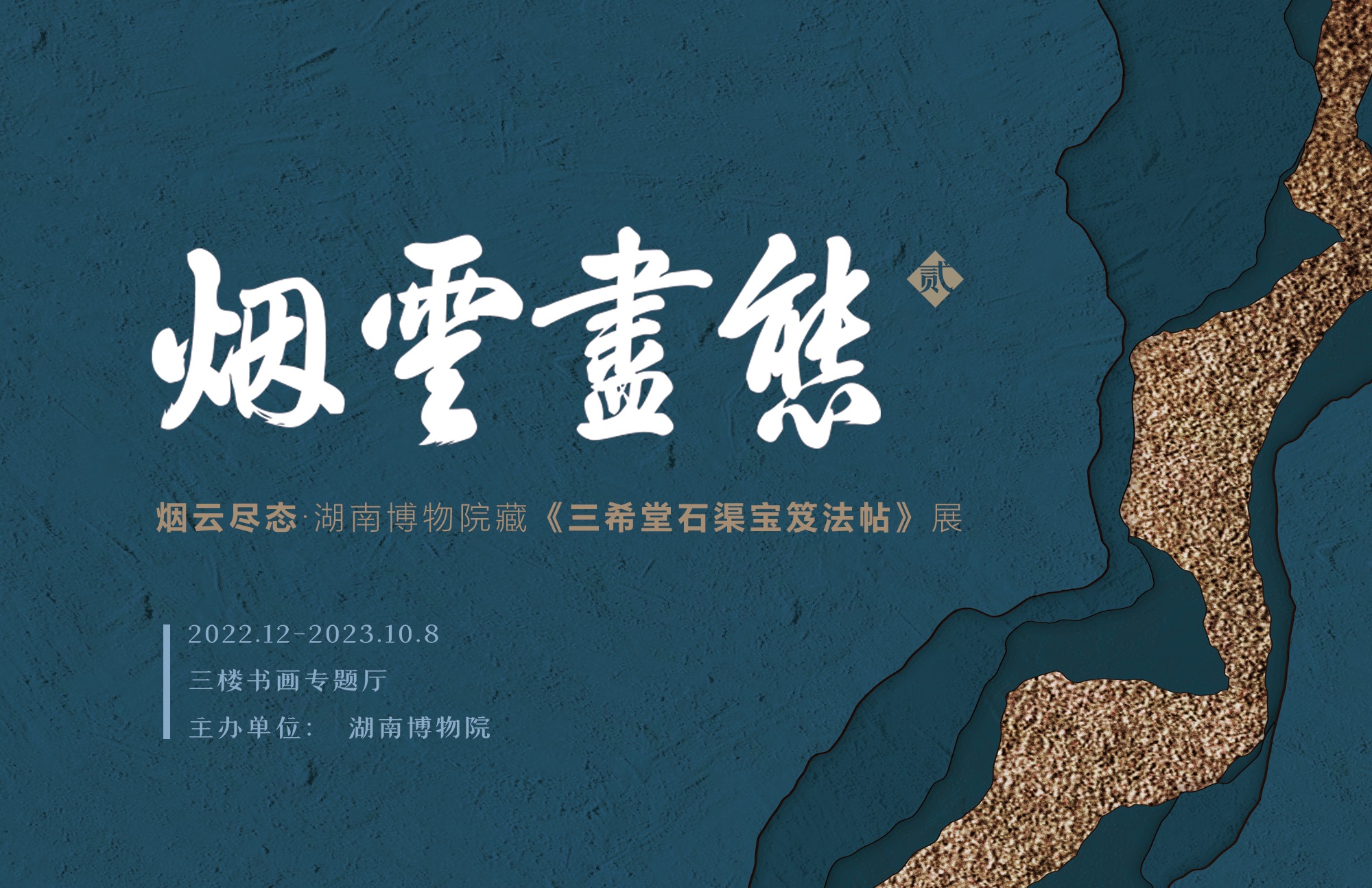
Introduction
烟云尽态——湖南博物院藏《三希堂法帖》展
《三希堂法帖》始刻于乾隆十二年(1747),是清高宗弘历敕命梁诗正、蒋溥等人历时七年从内府著录于《石渠宝笈》里的历代书法名迹中甄编、摹刻而成。其中收录了珍藏在养心殿西暖阁“三希堂”中的三件乾隆皇帝的“最爱”——王羲之《快雪时晴帖》、王献之《中秋帖》和王珣《伯远帖》,因而得名。帖刻成后,乾隆于北海公园中特建“阅古楼”以储帖石,又题“烟云尽态”四字榜书及七言诗以附之,足见珍视程度。
其所收之帖,上起魏晋,下至晚明,几乎囊括了《停云馆帖》《郁冈斋帖》等明代丛帖内的所有墨迹珍品。一些原迹或毁或失,今天已无法见到,如钟繇《荐季直表》、王献之《送梨帖》、赵孟頫《纨扇赋》等,幸赖此刻“勾魂摄魄”之术,留存“下真迹一等”之貌。
此套法帖卷帙浩繁、鉴选严格、摹刻精良、规模宏大,汇集名家135位、法书340件、题跋200多段、印章1600多枚,分编32卷,刻石495块,镌字9万余个,堪称刻帖之翘楚,乃“艺苑之钜观、墨林之极轨”,具有极高的历史、艺术和学术价值。
湖南博物院书画碑帖藏品丰富,不乏珍品。2021年策划、展出《三希堂法帖》系列善本,反响热烈,广受好评。时隔一年,我们再次遴选六十余人百余件作品,悉数将其和盘托出,以飨观众,并祈方家教正。
Highlights
- 清·弘历 书 三希堂石渠宝笈法帖序
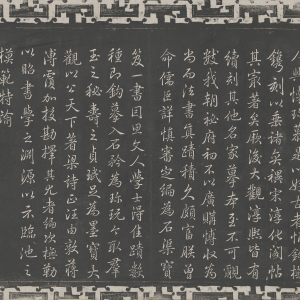
- 清·弘历 书 三希堂石渠宝笈法帖榜题“烟云尽态”
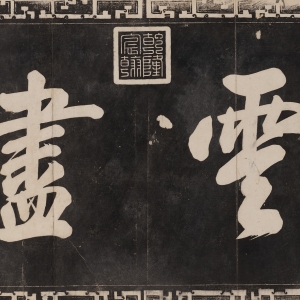
- 清·弘历 书 三希堂石渠宝笈法帖诗跋《阅古楼》
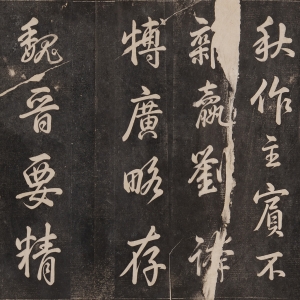
- 晋·王羲之 书《袁生帖(二谢帖)》(古摹本)

- 晋·王羲之(旧传) 书《曹娥碑》
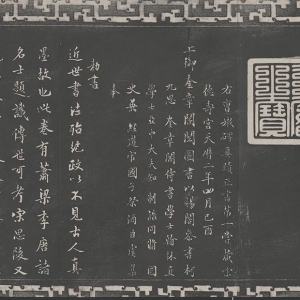
- 隋·佚名 书 《出师颂》

- 唐·欧阳询 书《卜商帖》(摹本)
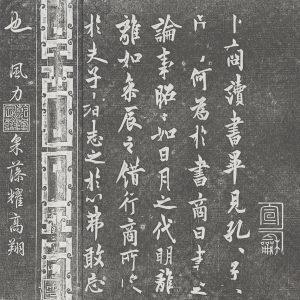
- 唐·欧阳询 书《张翰帖》(摹本)
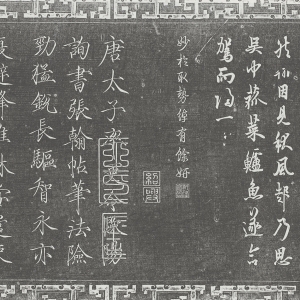
- 唐·褚遂良 书《倪宽赞》(宋仿)

- 唐·冯承素(旧传) 摹 《兰亭序》

- 唐·颜真卿(旧传) 书《告身帖》
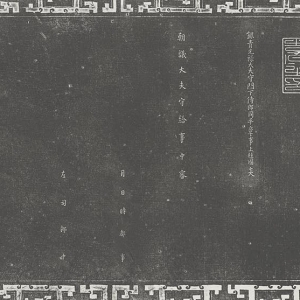
-
See More
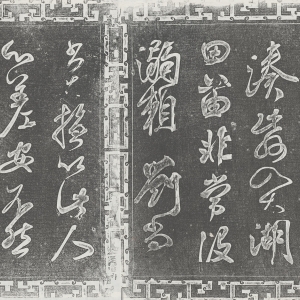
Visiting guide
湖南博物院书画碑帖藏品丰富,不乏珍品。2021年策划、展出《三希堂法帖》系列善本,反响热烈,广受好评。时隔一年,我们再次遴选六十余人百余件作品,悉数将其和盘托出,以飨观众,并祈方家教正。

Introduction
Foundation: the Art Changsha 2022
In the Chinese modern art history, there was a correction of appellation concerning the art medium: after the founding of the People’s Republic of China, the generally accepted appellation of "foreign painting" or "western painting" in the first half of 20th century was swiftly substituted by the name of "oil painting" which was named after its material feature. However, there was difference of only a single word, the appellation of oil painting interpreted the promotion, dissemination and practice of it, as well as corresponding transformation and construction of modern art in China, as the practicing process of learning advanced culture to nurturing new culture. From the perspective of "culture-politics", the appellation of oil painting suggested that China's modernization was an internalization process oriented to the "world picture".
How to interpret the internalization process of China’s modernization, or rather, how to establish the historical consistency between China’s contemporary art and China’s modern art, is the focus and thinking topic of this exhibition. In fact, when facing the current Chinese society, there were numerous people in China’s contemporary ideological sphere advocated that the public should grasp and deal with the historical correlation among three traditions of Confucian culture, socialist revolution and the reform and opening up. Moreover, scholars coincidentally mentioned that it was necessary to confront the significance of the entire traditional Chinese historical culture to the historical foundation and spiritual foundation of modern China—as an inspiration for ideological plans, the transcendence of spacetime displayed by Chinese civilization has undoubtedly set up a larger historical and cultural framework for the topics covered in this exhibition, which is a reflection of Chinese contemporary art.
"Foundation" of this exhibition consists of three solo art exhibitions of Chinese artists: Zhang Enli’s "After Emptiness",Wang Yuyang's "The Marvelous Clouds" and Su Xinping’s "Long Journey". As for the concept and practice of art, although three artists own different orientations, from their artworks, the public could capture a modern experience of Chinese art represented by oil painting throughout the ancient and modern times: one is universal living world that keeps pace with the times, and the other is the value world of thinking and presenting "who we are", the two worlds are dialectically unified in the narrative and practice of self-history. Therefore, in a sense, the "civilization" here does not mean a context of the past, on the contrary, it is a scene of historical possibility about how we move towards the future.
Highlights
Artist introduction








